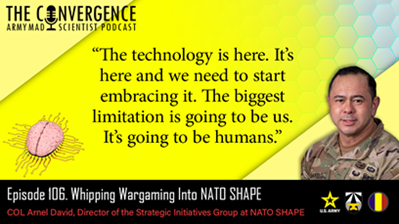“The technology is here. It’s here and we need to start embracing it. The biggest limitation is going to be us. It’s going to be humans.”
[Editor’s Note: Army Mad Scientist continues our series of blog posts and podcasts in the run up to our Game On! Wargaming & The Operational Environment Conference, co-hosted with the Georgetown University Wargaming Society, on 6-7 November 2024 — additional information on this event and the link to our registration site may be found at the end of this post (below).
In today’s episode of The Convergence podcast, Army Mad Scientist welcomes back COL Arnel P. David, a frequent contributor to the Mad Scientist Laboratory and returning podcast guest, to learn how NATO is injecting new technologies into wargaming to integrate and build staff proficiency across the Alliance’s 32 member nations’ militaries — Enjoy!]
[If the podcast dashboard above is not rendering correctly for you, please click here to listen to the podcast.]
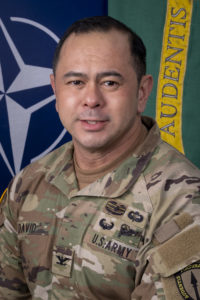 COL Arnel P. David is the Director of the Strategic Initiatives Group at NATO Supreme Headquarters Allied Powers Europe (SHAPE). He is a distinguished military graduate from Valley Forge Military College, completed a Master of Arts from the University of Oklahoma, a Master of Military Art and Science in the Local Dynamics of War Scholars Program at the U.S. Army Command and General Staff College, and is a distinguished graduate of the Joint Advanced Warfighting School (JAWS) where he was a National Defense University Scholar and completed a Master of Science in Joint Campaign Planning and Strategy. COL David is a PhD candidate with King’s College London. He is the cofounder of Fight Club International, a global gaming network seeking to improve the efficacy of warfighting across the spectrum of conflict and competition — find information on Fight Club‘s current online Tactical Decision Game at the end of this post.
COL Arnel P. David is the Director of the Strategic Initiatives Group at NATO Supreme Headquarters Allied Powers Europe (SHAPE). He is a distinguished military graduate from Valley Forge Military College, completed a Master of Arts from the University of Oklahoma, a Master of Military Art and Science in the Local Dynamics of War Scholars Program at the U.S. Army Command and General Staff College, and is a distinguished graduate of the Joint Advanced Warfighting School (JAWS) where he was a National Defense University Scholar and completed a Master of Science in Joint Campaign Planning and Strategy. COL David is a PhD candidate with King’s College London. He is the cofounder of Fight Club International, a global gaming network seeking to improve the efficacy of warfighting across the spectrum of conflict and competition — find information on Fight Club‘s current online Tactical Decision Game at the end of this post.
Army Mad Scientist sat down with COL David to discuss his views on wargaming in the U.S. Army and NATO, how technology is shaping its evolution, and how to push it to the forefront of Professional Military Education (PME). The following bullet points highlight key takeaways from our conversation:
-
-
- NATO SHAPE recently stood up a wargaming department. They are creating and prototyping
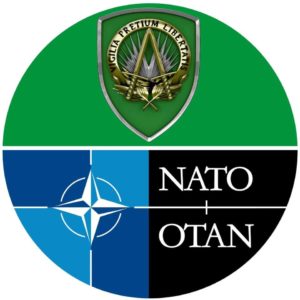 games at the strategic level that can incorporate many of the 32 member countries as well as counter-terrorism games. This nascent team is just beginning to build out its wargaming capability and is looking for experts to contribute to its mission.
games at the strategic level that can incorporate many of the 32 member countries as well as counter-terrorism games. This nascent team is just beginning to build out its wargaming capability and is looking for experts to contribute to its mission.
- NATO SHAPE recently stood up a wargaming department. They are creating and prototyping
-
-
-
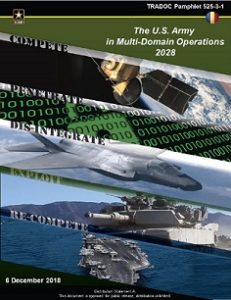 The aforementioned wargaming department is crowdsourcing input to help better understand “what Multi-Domain Operations (MDO) looks like.” They plan to take the information they collect and use it to construct games that will help explore the crowdsourcing prompt. Additionally, the best ideas will be evaluated and briefed out to Senior U.S. Army and NATO leaders.
The aforementioned wargaming department is crowdsourcing input to help better understand “what Multi-Domain Operations (MDO) looks like.” They plan to take the information they collect and use it to construct games that will help explore the crowdsourcing prompt. Additionally, the best ideas will be evaluated and briefed out to Senior U.S. Army and NATO leaders.
-
-
-
- A mixed-method approach to wargaming is best. The wargame itself is not the end state; rather, the post-game analysis and the lessons learned from multiple iterations is what is important. For wargames that focus on the Balkans, NATO incorporated large-language models (LLMs) to create
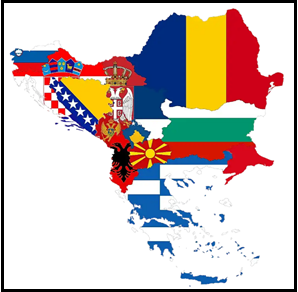 psychometric profiles on different ethnic groups in the region to help better understand customs, traditions, and norms to be played in a contested-narratives environment within the game. This not only allowed them to test out military operations, but also to test out specific narratives to see what is effective and what is not in countering an adversary’s information operations.
psychometric profiles on different ethnic groups in the region to help better understand customs, traditions, and norms to be played in a contested-narratives environment within the game. This not only allowed them to test out military operations, but also to test out specific narratives to see what is effective and what is not in countering an adversary’s information operations.
- A mixed-method approach to wargaming is best. The wargame itself is not the end state; rather, the post-game analysis and the lessons learned from multiple iterations is what is important. For wargames that focus on the Balkans, NATO incorporated large-language models (LLMs) to create
-
-
-
- Artificial Intelligence (AI) is not supplanting human expertise in wargaming, but rather allowing much of the preparation to be completed more quickly. Orders of battle, rules, and doctrine can be loaded into the system and incorporated instantly,
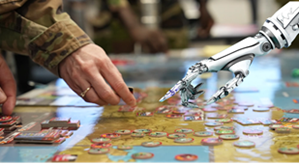 allowing more iterations of games to run and reducing the time spent during games discussing semantics and administration.
allowing more iterations of games to run and reducing the time spent during games discussing semantics and administration.
- Artificial Intelligence (AI) is not supplanting human expertise in wargaming, but rather allowing much of the preparation to be completed more quickly. Orders of battle, rules, and doctrine can be loaded into the system and incorporated instantly,
-
-
-
- There are still significant challenges in incorporating advanced technology onto secure systems. However, there is urgency to seek solutions as potential adversaries are already working toward the same end. Ceding this advantage would allow them to gain more out of wargaming and potentially adapt their fighting more quickly and more effectively.
-
-
-
- Wargaming is an effective way to improve critical thinking and decision-making skills. A combination of conventional, table-top games with physical pieces and cards and digital counterparts might be the best
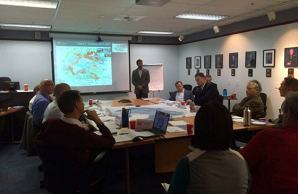 solution to approaching the margins of learning from wargaming. This will require a conscious effort from Senior Leaders to push for wargaming as a part of PME at all levels, as well as a change in mindset from current wargamers to accept technological innovation.
solution to approaching the margins of learning from wargaming. This will require a conscious effort from Senior Leaders to push for wargaming as a part of PME at all levels, as well as a change in mindset from current wargamers to accept technological innovation.
- Wargaming is an effective way to improve critical thinking and decision-making skills. A combination of conventional, table-top games with physical pieces and cards and digital counterparts might be the best
-
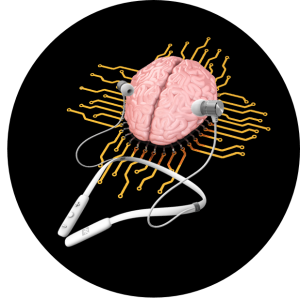 Stay tuned to the Mad Scientist Laboratory for our next episode of The Convergence podcast on 25 October 2024, when we will feature returning guest, Dr. Billy Barry, and LTC Blair Wilcox from the Army War College (AWC) discussing their recent case study using their “AI Study Buddy” T.I.M., to pass an AWC class, how hybrid intelligence (HI) can augment human cognition, and how AI could be used to amplify Army wargames.
Stay tuned to the Mad Scientist Laboratory for our next episode of The Convergence podcast on 25 October 2024, when we will feature returning guest, Dr. Billy Barry, and LTC Blair Wilcox from the Army War College (AWC) discussing their recent case study using their “AI Study Buddy” T.I.M., to pass an AWC class, how hybrid intelligence (HI) can augment human cognition, and how AI could be used to amplify Army wargames.
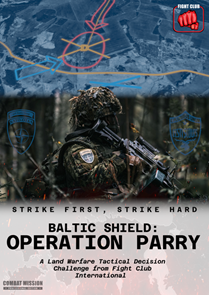 Fight Club’s new Online Tactical Decision Game (TDG), ‘Operation Parry’, recently went live on the Fight Club website. The game — played via the submission of text-based orders — features a mixed Estonian-United Kingdom Task Force launching a spoiling attack on a Donovian Tactical Assembly Area. Orders submitted by each player will be executed in-game against a single ‘AI Plan,’ and a winner declared based on final score and tactical outcome.
Fight Club’s new Online Tactical Decision Game (TDG), ‘Operation Parry’, recently went live on the Fight Club website. The game — played via the submission of text-based orders — features a mixed Estonian-United Kingdom Task Force launching a spoiling attack on a Donovian Tactical Assembly Area. Orders submitted by each player will be executed in-game against a single ‘AI Plan,’ and a winner declared based on final score and tactical outcome.
The scenario has also been created to provide an example of an ad-hoc multinational formation (Estonian Mechanized Infantry with British Recon and Maneuver Support), operating under challenging conditions.
Simulated tactical problems such as this can provide a good opportunity to bring together allied forces within a virtual environment to familiarize tactics, doctrine, communications protocols, terminology, and other critical interoperability factors.
Fight Club is exploring a range of interoperability-based simulation projects; aiming to develop low-cost resources that can be used ahead of combined arms exercises in the field. It seeks to enable units to ‘pre-familiarize’ with foreign partner formations in detail, enabling smoother, more efficient maneuvers out in the real world.
The Operation Parry TDG will be demonstrated at Game Night scheduled on the Day 1 of Army Mad Scientist’s Game On! Wargaming in the Operational Environment conference on November 6th in Washington, DC (more below).
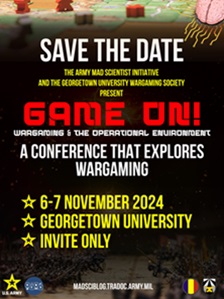
We hope today’s podcast and post piqued your interest regarding how wargaming can inform us about the Operational Environment and support Professional Military Education. Army Mad Scientist and the Georgetown University Wargaming Society invite you to learn more about this topic at our Game On! Wargaming & The Operational Environment Conference.
What: An in-person conference to explore Wargaming and how it can help the Army better understand the Operational Environment
When: 6-7 November 2024
Where: The Healey Family Student Center, Georgetown University, 3700 Tondorf Road, Washington, DC 20057
Why: To explore new wargaming methods, new ways to incorporate learning into Professional Military Education, and have an open dialogue with wargamers inside and outside the military.
***In order to attend, you must register through Eventbrite — click here now to reserve your seat — access will be limited to registered attendees only!***
Stay tuned to the Mad Scientist Laboratory for conference updates and forward any questions you may have to madscitradoc@gmail.com
In the meantime, check out the following Mad Scientist Laboratory wargaming related content:
Wargaming: A Company-Grade Perspective, by CPT Spencer D. H. Bates
Taking the Golf Out of Gaming and associated podcast, with Sebastian Bae
“Best of” Calling All Wargamers Insights (Part 1)
Civilian Harm Mitigation and Response (CHMR) Considerations in Wargaming LSCO, Achieving Victory & Ensuring Civilian Safety in Conflict Zones, and associated podcast with Andrew Olson
Brian Train on Wargaming Irregular and Urban Combat
Live from D.C., it’s Fight Night (Parts One and Two) and associated podcasts (Parts One and Two)
Would You Like to Play a Game? Wargaming as a Learning Experience and Key Assumptions Check and “No Option is Excluded” — Using Wargaming to Envision a Chinese Assault on Taiwan, by Ian Sullivan
Using Wargames to Reconceptualize Military Power, by proclaimed Mad Scientist Caroline Duckworth
Gaming the System: How Wargames Shape our Future and associated podcast, with guest panelists Ian Sullivan, Mitchell Land, LTC Peter Soendergaard, Jennifer McArdle, Becca Wasser, Dr. Stacie Pettyjohn, Sebastian Bae, Dan Mahoney, and Jeff Hodges
The Storm After the Flood virtual wargame scenario, video, notes, and Lessons Learned presentation and video, presented by proclaimed Mad Scientists Dr. Gary Ackerman and Doug Clifford, The Center for Advanced Red Teaming, University at Albany, SUNY
Gamers Building the Future Force and associated podcast
Disclaimer: The views expressed in this blog post do not necessarily reflect those of the U.S. Department of Defense, Department of the Army, Army Futures Command (AFC), or Training and Doctrine Command (TRADOC).

